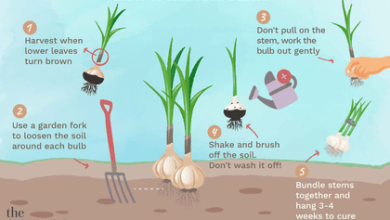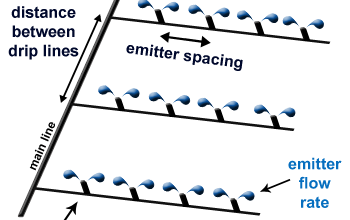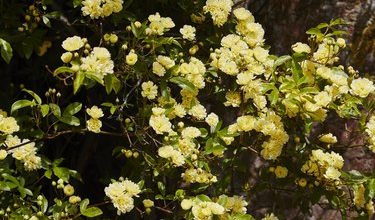How often and how to water my peppermint?

 Peppermint is one of the plants that we should all have at home due to its benefits and ease of use.
Peppermint is one of the plants that we should all have at home due to its benefits and ease of use.
From seasoning meals to offering an exquisite aroma to drinks like mojito, peppermint is a highly versatile plant.
The best thing is that it is quite easy to reproduce and grows quickly, so you will never lack it.You have to consider that watering mint is a central issue to achieve that goal, so it’s time for us to tell you how to do it like an expert.
Important points when watering a mint:
- Irrigation frequency: irrigations in summer have to be frequent, being located in 3 weekly. During the winter this level will decrease to approximately one weekly watering.
- Irrigation method: with a watering can or drip if possible.
- Optimum time of day for irrigation: during the first hours of the morning when the sun is less hot.
- Identify excess water: settlement of fungi and root rot.
- Identify lack of water: yellow leavesthat fall off the plant, stems that lose vigor and fall to one side.
What watering needs does peppermint have?
Peppermint is a plant that does not develop well in dry substrates, but needs relatively good humidity.This implies that the level of irrigation must be established with a certain frequency and a sufficient amount of water so that it is healthy.

To achieve this goal, you must consider the amount of plant you have and the size of the pot, since the most common is to plant in containers. The ideal is that the substrate is always moist, but taking care that it does not get waterlogged because it is possible that this condition is detrimental.
How can we detect lack of irrigation in mint?
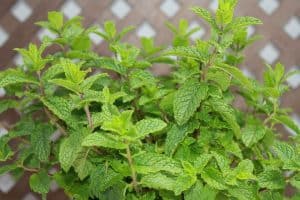 If it’s not in an environment with the level of humidity it likes, the plant will start to suffer with weak stems and leaves.
If it’s not in an environment with the level of humidity it likes, the plant will start to suffer with weak stems and leaves.
The first thing will be that the leaves will turn yellow, dry and will fall off the plant little by little.The stems will also lose vigor and you will be able to see them lopsided.
Remember that humidity is very important for mint and as it is very resistant, you can apply a generous watering for the first time and continue with the recommended frequency. In a short time your peppermint will be as beautiful as you like it again.
How often should we water mint?
You will have to establish the frequency of watering the mint based on the conditions where you have it installed.During the summer it is common for the substrate to dry out more quickly, so it is worth applying up to 3 weekly waterings.
Already for the winter this frequency will be reduced because the plant will be less demanding, being able to place it in a weekly watering.
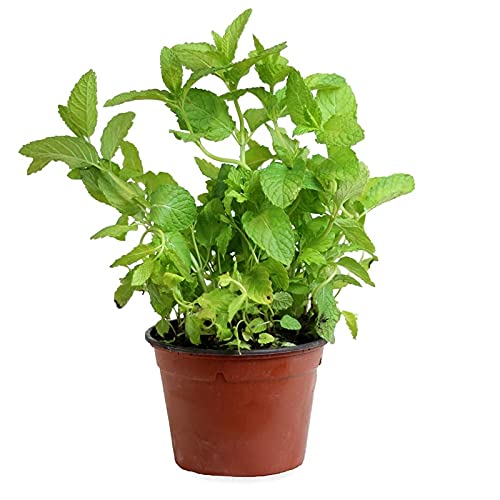
Always consider the state of the soil before applying any irrigation, since it is essential that a small level of dryness is present. In this way you will avoid overwatering and the plant starting to present problems at the root level.
What is the best way to water peppermint?
In most cases, peppermint is planted in pots and kept indoors or in a part of the house close to indoors. This makes it easier to use the shower as the most efficient method for watering because it helps to distribute the water more evenly, providing the right amount.

It is necessary to consider that the irrigation of peppermint is oriented to be frequent but with a low amount of water, since its roots are not very deep. In this way, always assess the state of the soil first and, if it looks dry, then apply irrigation, but if it is still very wet, it is better to wait.
If peppermint is planted in the garden, you can also use a watering can or apply drip irrigation if available.
How do we detect excess water in mint?
One of the most frequent problems that arise when caring for peppermint is that they are overwatered due to the fact that they require moisture. The idea is to water enough so that the plant enjoys a soft and cool environment, but ensuring that waterlogging does not occur.
When these are generated, it is quite easy for fungi to lodge that cause various diseases or root rot to occur.To avoid this, it is important to manage the risks well and allow the substrate to drain excess liquid when finished.

Peppermint is an excellent plant to have near a window in the kitchen at home and take fresh leaves when you need them. Your good health will go hand in hand with applying a correct irrigation of mint, so take notes of everything that we give you here so that you have championship specimens.
Bibliographic references
- Effect of water stress in peppermint (mentha piperita) on polyphenols and antioxidant capacity of infusions, ME González Mendoza – 2013 – ri.uaq.mx
- Implementation of thermographic images for the detection of water stress in peppermint (Mentha spicata) under greenhouse in the Bogotá Savannah, J Vargas Cruz – Department of Civil and Agricultural Engineering, 2015 – repository.unal.edu.co
- Cultivation of parsley and mint, JJ Quintero – 1985 – mapa.gob.es
- Study of the water requirements of the cultivation of mint (Mentha spicata L.) under greenhouse with drip irrigation system [Cd Room], RF Leal Horn, NN Nieves Orduña – 2004 – sidalc.net
- Mitigation of water deficit in Mentha spicata L. with organic fertilizers, expressed in physiological and production variables, E García Galindo – 2018 – dspace.cibnor.mx
- Study of the irrigation needs of the cultivation of mint (Mentha spicata L.) under greenhouse in the savannah of Bogotá, M Patiño Martínez, CA Urrea Bulla – 2003 – sidalc.net
Maybe you are also interested in:

![Photo of [7 Tips] For the Perfect Care of your Garden](https://www.complete-gardening.com/wp-content/uploads/2022/08/7-tips-for-the-perfect-care-of-your-garden-390x220.jpg)
